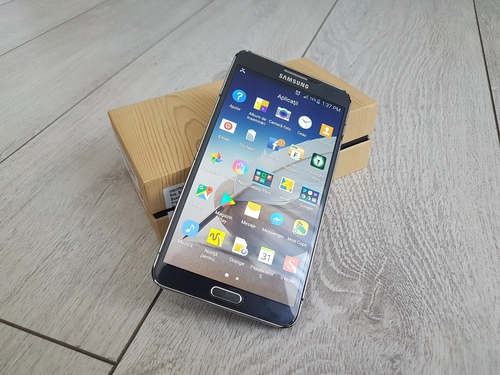New Galaxy Note 9 Confirmed By Samsung, But Could Lose Critical Feature
Samsung typically uses the Galaxy Note phablets to push new technology before introducing it to the smartphone handsets through the Galaxy S handset six months later. Which means the loss of a technological superpower from the upcoming Galaxy Note 9 could leave a critical void in the South Korean company’s portfolio.
That void is the under-screen fingerprint reader. Oft discussed as a solution to ‘bezel free phones’ that do not want to follow the Essential phone and employ a notched design, the chances of this technology making it into the Note 9 are finely balanced. For a positive view on this, I’d recommend Forbes’s Gordon Kelly. I’m going to assume that the technology is not going to be ready for a handset heading to the mass market in six months time.
The trick is making an under-screen fingerprint reader not just work accurately, but work as accurately and quickly as the current crop of fingerprint sensors that are mounted in home buttons, power buttons, or under the camera lenses at the rear of an Android device. This technology has been demonstrated on a number of devices, but Samsung rejected the technology for the Galaxy S9 and S9 Plus, deciding to go with the well-understood standalone fingerprint reader that was mounted underneath the camera lens.
Having it available in the Galaxy Note 9 – expected to launch in August 2018 – would make a strong statement about Samsung’s commitment to new technology and ensure that the South Korean phablet would stand out against Apple’s use of facial recognition on the iPhone X (which is expected to branch out to more handsets at the traditional September 2018 launch). It would also allow the Note 9 to stand out against Samsung’s other handsets, including the Galaxy S9 family.
What happens if Samsung is not satisfied with the accuracyand the Note 9 reverts to a ‘regular’ fingerprint reader?
That’s the question posed by reports last week from noted analyst King-Chi Kuo. Although Kuo noted last year that the Note 9 was expected to carry the under-screen technology (and correctly predicting it would skip the S9 handsets), Kuo now believes that Samsung is again delaying the feature – citing issues with power consumption and the interaction with screen protectors.
In practice it means that the Note 9 compared to the Note 8 will continue the trend of the Galaxy S9 / Galaxy S8 pairing- better specifications inside the handset, more power available for more complicated apps, but a feeling of stability in terms of design and innovation. Outside of the geekerati, the general public would see Samsung delivering ‘the same again’ with title incentive to upgrade from functionally identical handsets from 2017 and 2016.

